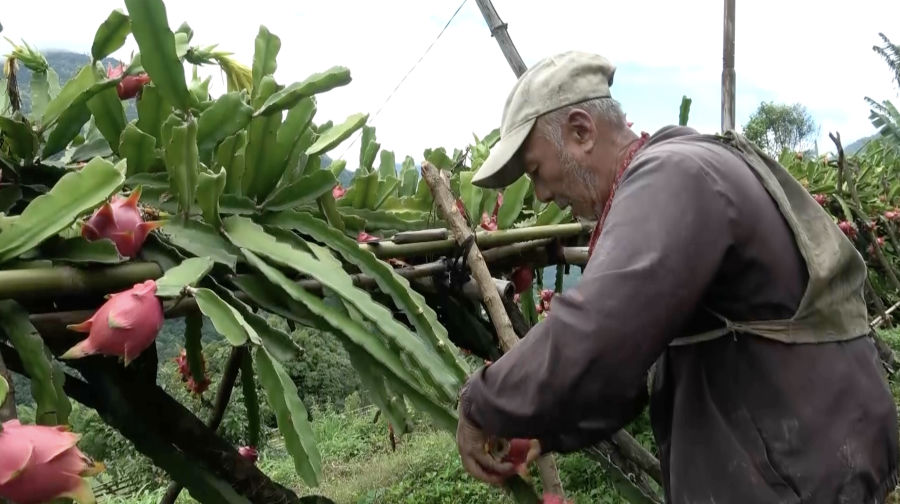
Dragon fruits are becoming a popular cash crop in Pema Gatshel. From just a handful of farmers a few years ago, today many are trying their hands at growing the fruit. Dragon fruits are known for their exotic appearance and health benefits.
The 75-year-old army veteran Sonam Dorji in Khar village began growing the fruit three years ago and has been generating a steady income.
As one of the first dragon fruit farmers in the gewog, he takes pride in seeing his hard work bear fruit.
“After the plants are placed on a bench-like support, animals don’t harm it—only ants do. But crops like maize are destroyed by wild boars. So, dragon fruit is always better. I don’t even have to depend on my children anymore.”
Interest in dragon fruit cultivation is spreading fast in the district. With rising demand and high market value, the fruit is becoming a promising source of income.
Today, farmers earn about Nu 250 per kilogramme of the fruit.
Tandin Zangmo, a farmer said, “We have received support from the government, and now cultivation is increasing. Though the fruit is small, its quality is not compromised. It can be preserved for a long time, and it is very nutritious.”
Mendrel Zangmo, another farmer said, “I haven’t sold any yet, but I’ve seen others doing good business. People even call us looking for the fruit. We are still cultivating more.”
Farmers say dragon fruits have a long shelf life and can be transported to distant markets if local demand falls.
Mendrel Zangmo added that “Dragon fruit isn’t easily destroyed by insects or animals, unlike other fruits. So, we keep expanding our cultivation. In the future, if harvests increase, I want to start marketing.”
Likewise, Tandin Zangmo said, “Even if we store it for a long time after harvesting, it only shrinks but doesn’t spoil. Because of this long shelf life, we can even transport it to other places.”
Although the fruits are difficult to grow in the higher regions, many in the lower-altitude gewogs have become fond of it mainly thanks to free seeds provided by the Gewog Administration office and the Millennium Fruit Tree Project.
From just about five farmers in 2022, there are now more than 700 farmers growing dragon fruits, according to agriculture officials.
With more farmers adopting the crop, it is expected to strengthen rural livelihoods and diversify Bhutan’s agricultural landscape.
Thinley Dorji, Pema Gatshel
Edited by Yeshi Gyaltshen








